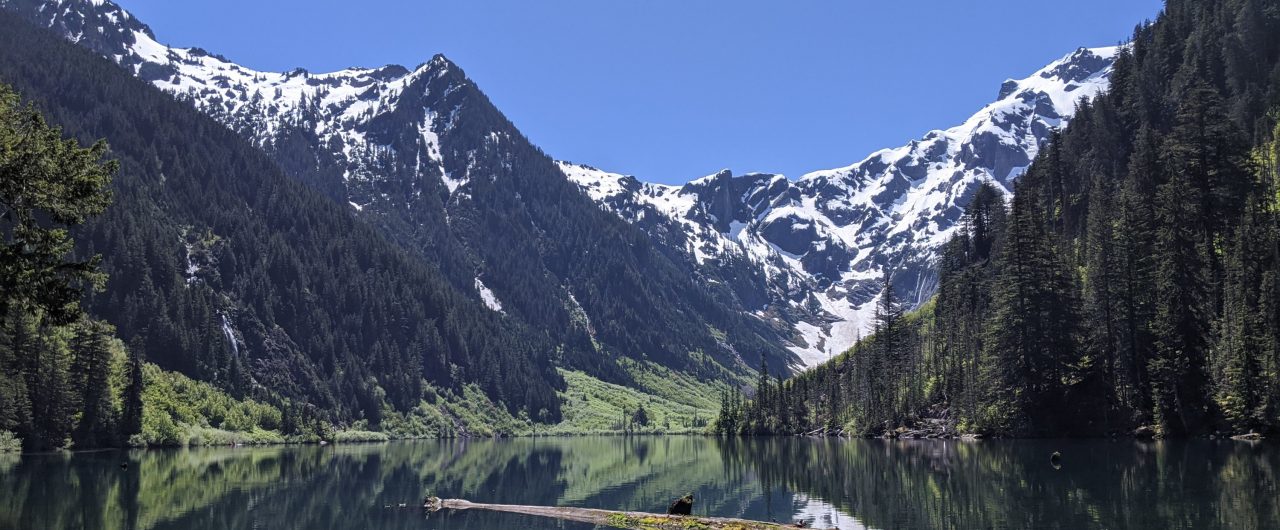On the eastern coast of Malaysian Borneo lies the town of Sandakan. The town itself is not much to speak of, but it serves as the jumping off point for the Sepilok Forest Reserve, one of the last remaining areas of raw jungle in Malaysian Borneo. I booked two nights at the Sepilok Nature Lodge, right at the edge of the reserve.
After arriving by plane from Kota Kinabalu and checking into the hostel, I spent my first afternoon at the two wildlife rehabilitation centers nearby. The first of the two was for sun bears. These small bears are great at climbing trees. While they can be found throughout Southeast Asia, the ones on Borneo represent an endangered subspecies. Much of their natural jungle habitat has been replaced by palm oil plantations, plus their bile is treasured as a component of traditional medicine. The bears at the Sepilok center have all been rescued from captivity, and the focus is on socializing them and teaching them the skills they need to survive in the wild. For the safety of everyone involved they are kept in a large enclosure until they’re ready for release. That means they were a little less wild than you’d expect, but it also means I could see them.


Next I visited the Orangutan Rehabilitation Center right next door. While some of the apes are actively recovering in a nursery, most are free to range throughout the forest reserve. However, the center feeds the animals daily to help keep the population stable (and to attract tourist revenue to help pay the bills), so they’re not as “wild” as they might normally be.


I was also surprised at how comfortable the humans were – I definitely felt the need to scramble to get out of the way.

That evening I walked down the road to the Rainforest Discovery Center for a night walk with the rangers. We spotted a good amount of wildlife, including giant red flying squirrels (we got to see one glide across the canopy), slow lorises, a python, and a whole bunch of big bugs.

On the second day I took a Grab (SE Asian Uber) into town, thinking I would take care of some errands. My driver Joyce and I struck up a conversation, and as we got to town she offered to take me around, serving as my personal driver for the day for just 60 ringgit. $12 for a worry-free day with a friendly and knowledgeable local? I’d be a fool to say no.
She ended up taking me all over town, including all sorts of spots I never would have thought to visit. From the best haircut experience of my life (head massage anyone?), to seafood soup at a floating village, to Buddhist temple at the top of the hill we ranged. She waited patiently as I suffered through a weirdly painful massage (I think I need to get better at feedback), commiserated over the human condition with me at the death march memorial, and then took me to a fantastic hole-in-the-wall Indian place for curry to take back to the hostel. Everything but the massage was perfect, and utterly effortless on my part.





Joyce offered to take me around the third day as well, which I gratefully accepted. My destination was the Labuk Bay Proboscis Monkey Sanctuary, far from Sepilok and further from the airport. The proboscis monkeys live in mangrove forests, a habitat that has been decimated in recent years by – you guessed it – palm oil plantations. The only remaining ones in the region live in a small section left undeveloped by the palm oil company, and while they’re more wild than pets, the remaining swamp is too small to support the population, making them reliant on a twice daily feeding at an observation platform. Visitors can watch for a modest fee.




I don’t know how to feel about the state of conservation in Eastern Sabah. On the one hand it’s disappointing how dependent these animals are on humans – seeing proboscis monkeys on a feeding platform or sun bears in an enclosure is about as inauthentic as it gets, just one step up from a zoo. On the other, I’m glad that at least some effort is being made. Joyce said that more than 90% of the region’s former jungle has already been developed into palm oil plantations. While she was quite critical of Big Palm, and I suspect they deserve much of that ire, it’s also probably true that the resulting jobs, tax revenue and infrastructure development have made a big impact on local quality of life for humans over the past few decades. That in turn enables research and conservation efforts. It’s hard to say what a balanced sharing of the land might look like.
With these dour thoughts in mind we headed back to town.


One more amazing meal at a place I could never find again, then to the airport to catch my flight to Brunei. It was a whirlwind trip, and I think it would have been much less smooth (and fun) had I not met Joyce. So if you’re reading this Joyce – thanks!

